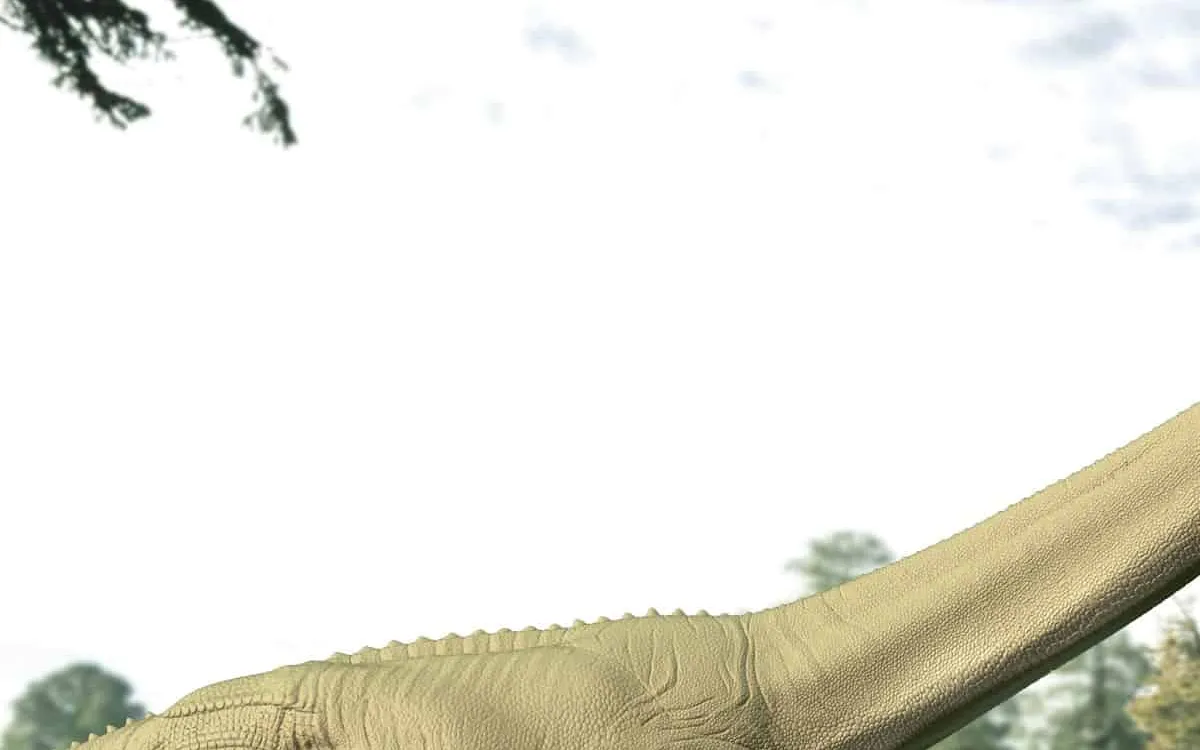
Since the late 19th century, sauropod dinosaurs—those iconic long-necked giants like the Brontosaurus and Brachiosaurus—have predominantly been classified as herbivores, or plant eaters. Yet, until recently, paleontologists lacked direct evidence in the form of fossilized gut contents to substantiate this classification. During a remarkable excavation in the outback of Queensland, Australia, I was part of a team that uncovered an extraordinary sauropod specimen named “Judy.” This rare find not only revealed the fossilized remains of Judy's last meal but also marked her as the most complete sauropod and the first to feature fossilized skin ever discovered in Australia.
Judy's exceptional preservation offers invaluable insights into the feeding habits of the largest land-living animals in history. For over 130 million years, sauropod dinosaurs roamed the Earth, dominating landscapes during the Jurassic and Cretaceous periods. Tragically, these magnificent creatures met their demise during the mass extinction event 66 million years ago. From the first reasonably complete sauropod skeletons unearthed in the 1870s, the hypothesis that these giants were herbivorous has seldom been challenged. Their relatively simple teeth, which were ill-suited for tearing flesh or crushing bone, alongside their small brains and cumbersome pace, further support the notion that sauropods primarily fed on plants.
While the body structure of sauropods appears relatively uniform—stocky, four-legged, and adorned with long necks—there is considerable variation upon closer examination. Some species boasted squared-off snouts with tiny teeth, while others had rounded snouts and more robust teeth positioned further back in their mouths. Neck lengths varied significantly, with some extending up to 15 meters, influencing their feeding height and the types of plants they could access. Additionally, variations in shoulder and hip heights among species would have impacted their feeding mechanics.
The discovery of Judy is part of a growing trend in sauropod finds in outback Queensland, largely thanks to the efforts of the Australian Age of Dinosaurs Museum in Winton. In 2017, our team unearthed this approximately 95-million-year-old sauropod, aptly named after Judy Elliott, the museum's co-founder. What set this find apart was not just its completeness but also the presence of a peculiar rock layer within Judy's abdominal region—approximately two square meters in area and ten centimeters thick—teeming with fossilized plants. This unique layer, confined to Judy’s abdomen and adjacent to the fossilized skin, led us to hypothesize that we had discovered the remains of her last meal.
Through meticulous analysis of Judy's skeleton at the museum's laboratory, we classified her as a Diamantinasaurus matildae. Advanced imaging techniques, including X-ray scans at the Australian Synchrotron in Melbourne and neutron imaging at Australia’s Nuclear Science and Technology Organisation in Sydney, allowed us to visualize the preserved plants within Judy's gut without causing damage. We also conducted chemical analyses on small samples of the gut contents, revealing that they had been transformed into stone by microbes in an acidic environment, potentially from stomach juices, and minerals from the decomposition of Judy's own body tissues.
Our findings confirm that sauropods primarily consumed greens, but interestingly, they appeared to chew very little. The analysis of Judy's gut contents indicated she had eaten bracts from conifers, which are relatives of modern monkey puzzle trees and redwoods, seed pods from extinct seed ferns, and leaves from flowering plants just before her death. The presence of conifers suggests that Judy fed well above ground level, while the angiosperms imply some lower-level feeding as well. This evidence indicates that the diets of some sauropods may have shifted as they matured, but they remained lifelong vegetarians.
Today, Judy's skin and gut contents are proudly displayed at the Australian Age of Dinosaurs Museum in Winton. While I can only speculate how I would feel about having the remains of my last meal exhibited for public viewing after my demise, I believe that if it contributes to scientific understanding, it would be worth it.
As a Research Associate at the School of Earth and Planetary Sciences at Curtin University, my work on Judy has unveiled new perspectives on the dietary habits and ecological roles of these magnificent sauropod dinosaurs. This remarkable discovery not only expands our understanding of sauropod evolution but also enhances our appreciation for the rich prehistoric life that once thrived on our planet.